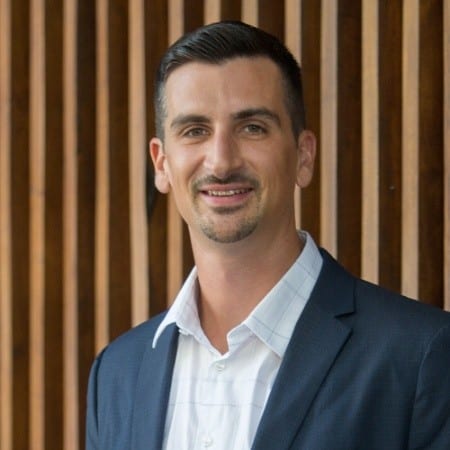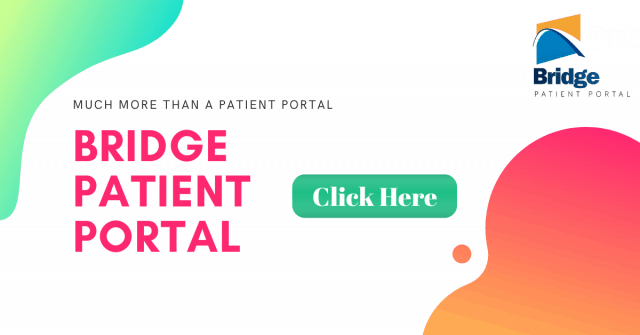Bridge Patient Portal has recently announced the release of its fully-integrated and customizable patient self-scheduling software solution, which gives patients more autonomy and freedom in scheduling appointments while increasing efficiencies for health organizations. To learn more about this interesting solution, we conducted an interview with John Deutsch, CEO Bridge Patient Portal.

1. Can you tell us more about your patient self-scheduling software solution?
Bridge offers health organizations a self-scheduling platform by which they can implement custom scheduling workflows, then publish the self-scheduling solution on their website, in an app or in Bridge’s patient portal solution. The workflows are full customizable, as well as the look and feel, as the processing is managed by Bridge’s API, making the front-end user interface or “self-scheduling form” a very light piece of code. There is no more need to embed rigid self-scheduling solutions as iFrames, common with other self-scheduling software vendors.
2. What tasks can patients perform using your solution?
Patients can select their appointment type, provider, location, date and time, as well as answer other questions specific to the appointment they are scheduling for. Bridge offers other features which can be included as part of the scheduling process orcan be implemented as steps before or after. These include appointment reminders, consent forms, registration forms, clinical forms and bill pay.
3. What tasks can health organizations perform using your solution?
The self-scheduling process is designed to be completely automated for the health organization, not requiring the intervention of office staff. However, the self-scheduling solution can be extended to office staff in order to help them schedule appointments for patients that call-in to schedule their appointment. This functionality is offered in the case of Advanced Sleep’s implementation.

Yes and no. The solution is available as a native solution inside of Bridge Patient Portal but is also available as a custom solution that resides outside of the native Bridge Patient Portal application and communicates to Bridge via its API. In the case of ASMS, the patient and staff user interface is entirely custom and resides outside of Bridge Patient Portal.
5. What are the drawbacks of current self scheduling solutions?
In most cases, they are simply very ridged. They are simply a form that can be modified to some limited degree to match the workflow of the health organization. They can’t handle advanced workflows and if the health organization wants self-scheduling on their website for example, the form is embedded via an iFrame, which generally implies a sub-par user experience. On the other end of the spectrum are completly custom solutions that are built from the ground up. These are simply expensive to build and maintain. Bridge sits in the middle of the market offering, providing health organizations with the best of both worlds.
6. How can your system overcome such drawbacks?
The front-end aka. the user interface or self-scheduling form is lightweight. This fully customizable form communicates with Bridge’s API, which is where all the logic and complexity resides.
7. How does your solution handle the different self-scheduling scenarios?
Bridge Patient Portal has a very powerful self-scheduling engine built-in. It receives the information from the patient via the API and then processes the request in the core Bridge Patient Portal application.
8. What are examples of complex scheduling rules that Bridge Patient Portal supports?
Certain appointment types might only be supported for patients that have a pre-requisite appoinment in their appointment history, or, based on the patient’s insurance type, different questions or providers/dates are presented to the patient.
9. Why do you think Advanced Sleep Medicine Services chose to adopt your self-scheduling solution?
Advanced Sleep finds themselves in a situation like most multi-location/provider health organizations. They are not so big as a 1000+ provider IDN to where they can afford to build a completely custom solution and they are big enough to where the cost of managing patient self-scheduling is extremely high. Most health organizations find themselves in their middle ground and therefore need a solution that can be tailored to their needs, but that does not come at an extreme cost.
10. Are there any positive experiences Advanced Sleep Medicine Services had so far by using your solution that you would like to share?
As soon as the solution went live, the patients began adopting the self-scheduling solution. Furthermore, all Advanced Sleep office staff are now scheduling call-in appointment requests via the solution, adding structure and automation to all staff-scheduled patient appointments.
This interview has been sponsored by Bridge Patient Portal
Digital Health Buzz!
Digital Health Buzz! aims to be the destination of choice when it comes to what’s happening in the digital health world. We are not about news and views, but informative articles and thoughts to apply in your business.


